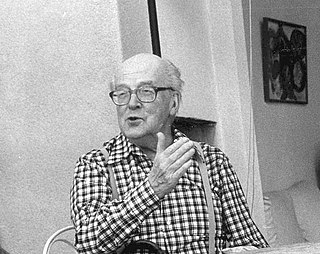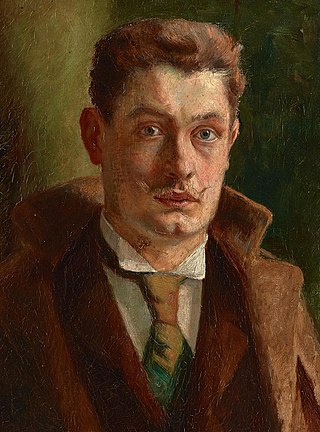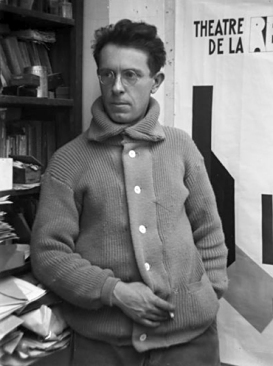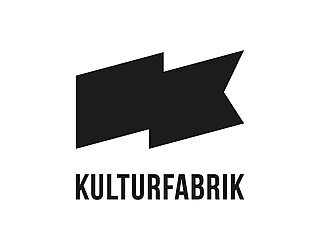
Limpertsberg is a quarter in north-western Luxembourg City, in the centre of Luxembourg.

Jean Le Moal was a French painter of the new Paris school, designer of stained glass windows, and one of the founder members of the Salon de Mai.

Lucien Wercollier was a sculptor from Luxembourg.
Eugène Dodeigne was a French sculptor living and working at Bondues (Nord-Pas-de-Calais).
Raymond Petit is a Luxembourgish sculptor. During his studies in the United States, Raymond Petit was initiated into the world of sculpture by following courses at the "William Howard Taft High School" in Los Angeles. He then embarked upon an artistic career with private and collective exhibitions that found a first recognition when he was granted the critics' prize at the VIIIth Biannual for Young Painters and Sculptors in Esch/Alzette in 1977.
Théo Kerg was a Luxembourgish painter and sculptor who specialized in modern art.

Jean Origer was a Luxembourgish cleric and director of the newspaper Luxemburger Wort. Jean Origer was born in Esch-Alzette and later became a member of the Chamber of Deputies of Luxembourg. During World War II, He was interned in the Mauthausen concentration camp where he died. A street in his hometown of Esch-Alzette is named after him.
Michel Stoffel (1903–1963) was a Luxembourgish artist and author. He also worked for a time in the insurance sector. Together with Joseph Kutter, he is considered to be one of Luxembourg's most prominent painters.

Dominique Lang (1874–1919) is considered to be Luxembourg's most important Impressionist painter. He painted both portraits and landscapes although he was employed as a high-school teacher.

Luxembourgish art can be traced back to Roman times, especially as depicted in statues found across the country and in the huge mosaic from Vichten. Over the centuries, Luxembourg's churches and castles have housed a number of cultural artefacts but these are nearly all ascribed to foreign artists. The first examples of art with a national flavour are paintings and maps of the City of Luxembourg and its fortifications from the end of the 16th until the beginning of the 19th century, although these too were mostly created by foreign artists. Real interest in art among the country's own citizens began in the 19th century with paintings of Luxembourg and the surroundings after the country became a grand duchy in 1815. This was followed by interest in Impressionism and Expressionism in the early 20th century, the richest period in Luxembourg painting, while Abstraction became the focus of art after the Second World War. Today there are a number of successful contemporary artists, some of whom have gained wide international recognition.

Joseph Csaky was a Hungarian avant-garde artist, sculptor, and graphic artist, best known for his early participation in the Cubist movement as a sculptor. Csaky was one of the first sculptors in Paris to apply the principles of pictorial Cubism to his art. A pioneer of modern sculpture, Csaky is among the most important sculptors of the early 20th century. He was an active member of the Section d'Or group between 1911 and 1914, and closely associated with Crystal Cubism, Purism, De Stijl, Abstract art, and Art Deco throughout the 1920s and 1930s.

Kulturfabrik Esch-sur-Alzette (KuFa) is a cultural centre located in a former slaughterhouse in the city of Esch-sur-Alzette in Luxembourg. As of 2019, the state-funded centre attracts almost 80,000 visitors a year.
Emile Haag is a Luxembourgish historian, trade unionist and former principal of the Athénée de Luxembourg. From 1987 to 2016 he was the president of the General Confederation of Civil Servants, a Luxembourgish trade union. In 1997, he was made commander of the Ordre de la couronne de chêne. Between 2005 and 2015 he was also President of the Chamber for Civil Servants and Government Employees. In 2015 he was made honorary president of that chamber.

Henry Ottmann (also Henri Ottmann) (10 April 1877 – 1 June 1927) was a French painter and printmaker.

Ketty (Catherine) Thull was a Luxembourgish cook, educator, cookbook writer; wrote the influential Luxemburger Kochbuch (1946). On its publication, the book received a positive review in the Luxemburger Wort which commented that it was a "Treasure trove of really interesting, useful recipes". It including 80 precisely described meat dishes, as well as 30 vegetable preparations. It also presents recipes for the national dishes of Luxembourg such as Treipen, Gehäk, Kuddelfleck, Judd mat Gardebo'nen and Sterzein.

Bettina Scholl-Sabbatini is a Luxembourgish sculptor, painter and ceramist. As a result of her participation in Soroptimist International Europa, where she served as vice-president from 2003 to 2005, she fostered an increasingly close relationship with Rwanda, where she has coordinated development projects following the Tutsi genocide. Her visits have also inspired her artistic designs. As a result, Rwanda exhibited her works at the 2010 Venice Biennale of Architecture.
Stefan Rinck is a German visual artist working in the field of sculpture. He lives and works in Berlin.
Maggy Stein was a Luxembourgish sculptor.
Nouvelle Équipe is the name of a group of Luxembourg artists after World War II who focused on innovation in art.
Germaine Hoffmann-Schmit was a Luxembourgish painter and collage artist.












